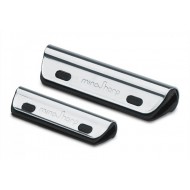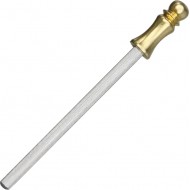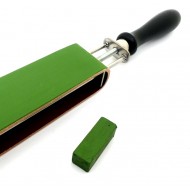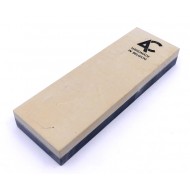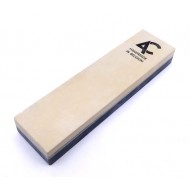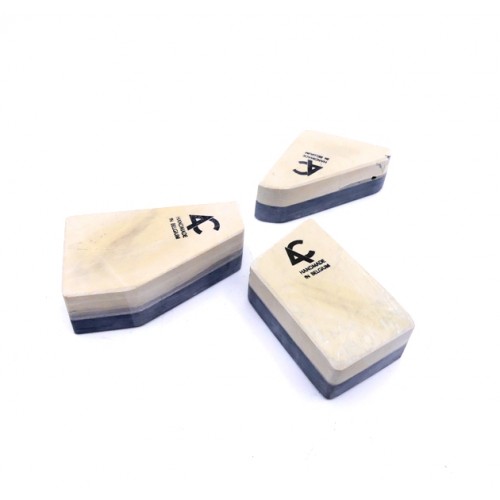
Ardennes coticule whetstone scraps from the cutting waste of regular stones. Size: Irregular 18-22 cm square. Grit: 8000 grit (approximate). Cannot be selected.
These Ardennes coticule whetstones are standard natural yellow coticule whetstones. These Belgian Ardennes coticule stones are well known to users of classic razors and straight razors, wood carvers, carpenters, leatherworkers, butchers, cutlers, nature explorers, cooks and anyone who appreciates natural handcrafted products. A Coticule whetstone consists of 2 layers. The top layer of Coticule is between 5 and 10 mm thick, depending on the Coticule seam (not all Coticule seams from our quarry are the same thickness). This layer of Coticule is glued onto an unusable black slate substrate. This substrate is used as a base as Coticule is a rather fragile material. Small cracks can be seen on the edges of the stone. This is perfectly normal for such a fragile material and does not influence the sharpening properties at all.
Sharpening with Coticule: Sharpening always uses water. All that is required is to wet the surface of Coticule; it is not necessary to immerse the stone. During sharpening, garnets are released from the surface of Coticule. The more garnets are released, the more abrasive the abrasive compound becomes.
A frequently used method of increasing abrasiveness is to use a polishing stone (see small snips available on our website) to produce a polishing compound with a high garnet content on the surface of the Coticule. This is achieved by rubbing the surface of one stone with another, the milky white polishing compound soon appears (slurry). For fine honing, the abrasive compound is diluted in several stages with a small amount of water until eventually only water remains on the surface.
Coticule is a non-porous stone and cannot be clogged. Use only water for honing, not oil. Oil is only used with porous stones to prevent iron particles from getting trapped in the pores and clogging them.
Flattening: Place a piece of sandpaper on a flat surface. Put some water on it and rub the stone until it is flat. Use sandpaper with a grit of +/- 80 to 100 microns.
Stone Lifespan: Lifespan depends on use. The more intensive the use, the faster the stone will wear down. In general, these sharpening stones last 20 years under normal use and with minimal care.
Lorem Ipsum is simply dummy text of the printing and typesetting industry. Lorem Ipsum has been the industry's standard dummy text ever since the 1500s, when an unknown printer took a galley of type and scrambled it to make a type specimen book.
- Availability: In Stock
- Reward Points: 240
- Product Code: 1640










